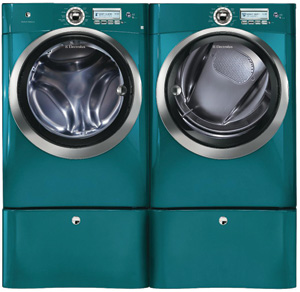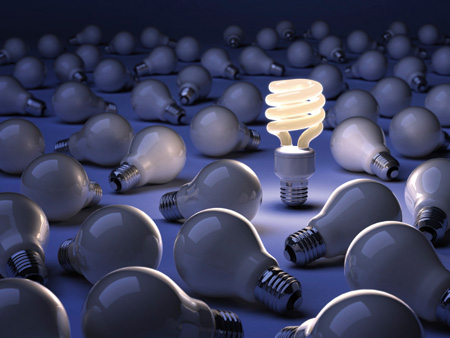When selecting lights and appliances for their new abodes, many log home owners are taking the “green” route and ferreting out options that are not only more environmentally friendly than the more traditional selections, but that also incur cost savings over time. Some of those savings come in the form of fewer replacements, while others show up as cost reductions on those monthly electricity bills.
One of the easiest ways to ensure that the appliances and lighting in your new home are green is by selecting products that are endorsed by Energy Star. A joint initiative between the U.S. Environmental Protection Agency (EPA) and the U.S. Department of Energy (DOE), the program’s aim is to help people save money and protect the environment through energy- efficient products and practices.
In 1992 the EPA introduced Energy Star as a voluntary labeling program designed to identify and promote energy-efficient products that reduce greenhouse gas emissions. With the exception of clothes dryers (which basically all use the same amount of energy, and therefore aren’t rated by Energy Star), all types of appliances are Energy Star rated. Washing machines that are endorsed by the program, for example, are typically 40 percent more energy efficient, and use 55 percent less water.
“Look for the Energy Star logo on all of your appliances,” advises Joseph D. Gilmore, owner and president at Gilmore Consulting Services, LLC, of Blackwood, South Carolina. “Try to buy the most efficient equipment possible because it will pay you back for years to come. As the price of energy goes up, the more efficient the equipment you purchased, the greater your savings will be.”
If you’re still not convinced, consider these facts from the EPA: By replacing a home’s five most frequently used lights or the bulbs in them with Energy Star-qualified lighting, the owner can save $70 each year. And if every American home replaced just one light with an Energy Star light, the country would save enough energy to light more than 3 million homes for a year and prevent 9 billion pounds of greenhouse gas emissions per year, equivalent to the emissions of about 800,000 cars.

Electrolux
Glass Houses
Because log homes are inherently “natural,” both in terms of construction and interior/exterior décor, they serve as a natural canvas for homeowners looking to go green. “It’s just a very ‘green’ way to build a home, in and of itself,” says Gilmore.
An expert in residential design analysis, Energy Star certifications, and National Association of Home Builders green certifications, Gilmore says a simple “look around the terrain and quick survey of your home site” will usually reveal even more environmentally friendly steps that can be taken.
Inside your home, Gilmore says one of the easiest ways to maximize natural light and minimize reliance on electricity and equipment is by taking the time to plan out window placement. Consider what region your home is located in, he adds, and what types of temperatures and climates you can expect as the seasons change. “If you are up north you’ll want to choose different options than someone who is in Florida,” says Gilmore.
At PrecisionCraft Log and Timber Homes in Meridian, Idaho, Jim Young, president, says the home’s orientation also plays a role in how energy efficient it will be once built. To maximize natural lighting while keeping heating and cooling bills to a minimum, he suggests orienting the log home facing away from the north whenever possible.
“When you have a lot of glass windows in your home, you don’t want it to be facing north,” says Young. “Unfortunately, people who build log homes tend to orient their homes to get the best view. But if they take into consideration the energy usage and location of the sun—and then tweak the home a little bit one way or another—they can really enhance its performance.”
Star of the Show
Here are the EPA’s tips for creating greener lighting for your new log home:
• Stop using incandescent light bulbs (the old-fashioned kind of light bulbs, with filaments)
• Use compact fluorescent light bulbs (CFLs). These bulbs, with the Energy Star label, use about 75 percent less energy than incandescent bulbs and last up to 10 times longer. (CFLs use a newer technology than regular light bulbs—you might be able to tell they’re CFLs if they look “swirly.”)
• Make sure to use the right bulb for each fixture (a “reflector lamp” for lights that are sunk into the ceiling, one that says “dimmable” if it has a dimmer switch).
• Always turn off the lights when leaving the room.
• Recycle the CFLs when they burn out. (Contact the municipal solid waste agency directly, or go to www.epa.gov/bulbrecycling or www.earth911.org to identify local recycling options.)

